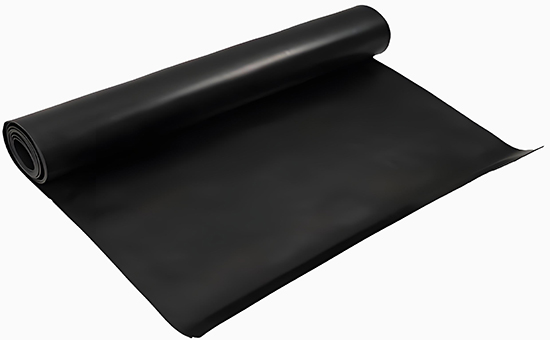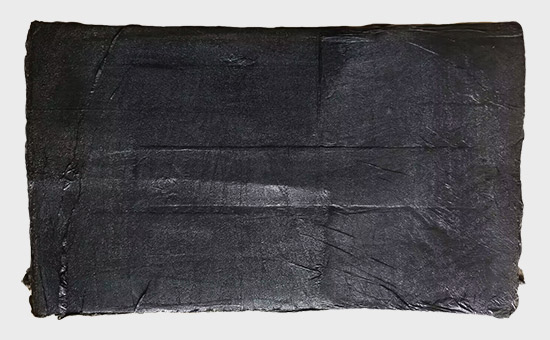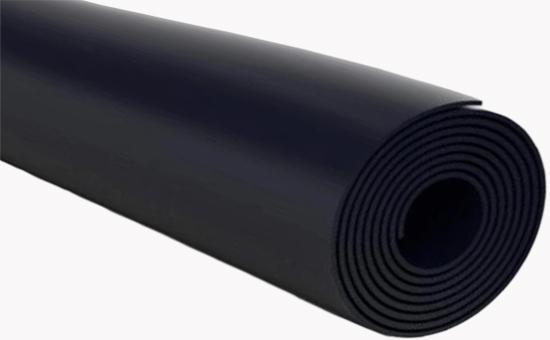
Oil-resistant rubber plates need to be in contact with oil medium for a long time during the working process, and are generally processed with oil-resistant rubber, such as nitrile rubber, neoprene, etc. However, the price of oil-resistant rubber on the market is quite high, and many manufacturers hope to use low-priced raw materials in the formula to reduce the cost of oil-resistant rubber boards, and low-priced tire recycled rubber has become the first choice. Tire recycled rubber is processed from waste tire rubber as raw material, which does not have oil resistance, can it be used in the production of oil-resistant rubber board? What issues should be paid attention to when using tire recycled rubber to reduce the production cost of oil-resistant rubber boards?
1. The mixing method and performance characteristics of tire recycled rubber in oil-resistant rubber board
(1) The mixing method of tire recycled rubber in oil-resistant rubber board
The main components of tire recycled rubber are natural rubber, general-purpose synthetic rubber and carbon black, which have good elasticity, mechanical properties, tear strength and wear resistance, and can be used with nitrile rubber, neoprene, nitrile rubber/PVC, nitrile rubber/PE blended materials in an appropriate ratio to prepare oil-resistant rubber plates, effectively reducing raw material costs.

(2) The role of tire recycled rubber in the production of oil-resistant rubber board
Appropriate amount of tire recycled rubber in the formulation of oil-resistant rubber plate and oil-resistant rubber and plastic board can effectively reduce the cost of raw materials while ensuring the oil resistance of the finished rubber board. The plastic E5LYY423 and fluidity of tire recycled rubber are good, which can reduce heat generation and scorching during processing, and improve the stability of compounding, calendering and other processes. When producing rubber-plastic oil-resistant rubber plates from nitrile/PVC, an appropriate amount of recycled rubber can improve the problem of unsmooth film surface and easy roller removal during mixing.
2. Vulcanization formula of oil-resistant rubber plate mixed with tire recycled rubber
(1) Nitrile rubber/tire recycled rubber is used to produce oil-resistant rubber plate vulcanization formula

65 parts of nitrile rubber, 35 parts of tire tread recycled rubber, 3.5 parts of zinc oxide, 1 part of anti-aging agent D, 65 parts of carbon black N774, 24 parts of terracotta, 24 parts of dibutyl phthalate, 0.2 parts of accelerator D, 0.65 parts of accelerator M, 1.65 parts of sulfur; Total 220 copies.
(2) Nitrile rubber/nitrile recycled rubber/tire recycled rubber are used together to produce vulcanization formula of oil-resistant rubber board
Nitrile rubber 30 parts, nitrile recycled rubber 15 parts, tire recycled rubber 55 parts, zinc oxide 2 parts, stearic acid 0.8 parts, anti-aging agent RD 1 part, paraffin wax 1 part, carbon black N330 12 parts, terracotta clay 12 parts, light calcium carbonate 35 parts, heavy calcium carbonate 40 parts, dibutyl phthalate 3.5 parts, pine tar 2.5 parts, industrial fat 1.2 parts, accelerator DM 0.7 parts, accelerator TMTD 0.2 parts, sulfur 2 parts; Total 213.9 copies.
(3) Nitrile rubber/PVC/tire recycled rubber is used to produce oil-resistant rubber plate vulcanization formula

Nitrile rubber 45 parts, PVC 20 parts, tire recycled rubber 35 parts, zinc oxide 2.5 parts, stearic acid 1 part, anti-aging agent SP 1 part, paraffin wax 1 copy, carbon black 25 parts, terracotta clay 30 parts, heavy calcium carbonate 50 parts, dibutyl phthalate 22 parts, accelerator CZ 1.15 parts, accelerator TMTD 0.25 parts, sulfur 1.2 parts; Total 235.1 copies.
When tire recycled rubber is used with oil-resistant rubber and rubber and plastic materials to produce oil-resistant rubber plates, the mixing ratio of tire recycled rubber is generally controlled at 20%-50%, and the sulfur-accelerator system is mostly used, using carbon black, terracotte, calcium carbonate, calcium silicate and other reinforcing fillers, and softeners and plasticizers that will not be extracted by oil. In the later stage, we will share with you the key points of the formulation of oil-resistant rubber plates mixed with tire recycled rubber.
Exclusive original article [commercial authorization] reprint, excerpt and excerpt in any form are prohibited without written authorization. Focus on Hongyun rubber: learn the process formula and raw material technology of producing rubber products from recycled rubber to help you reduce costs and increase profits